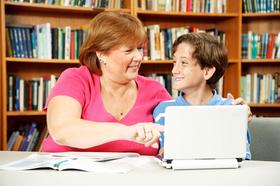For the 2024-25 school year, there are 5 public schools serving 899 students in Wabasha, MN (there are , serving 96 private students). 90% of all K-12 students in Wabasha, MN are educated in public schools (compared to the MN state average of 90%).
The top ranked public schools in Wabasha, MN are Wabasha-kellogg Elementary School, Falcon View Connections High School and Wabasha-kellogg Secondary. Overall testing rank is based on a school's combined math and reading proficiency test score ranking.
Wabasha, MN public schools have an average math proficiency score of 34% (versus the Minnesota public school average of 45%), and reading proficiency score of 49% (versus the 51% statewide average). Schools in Wabasha have an average ranking of 3/10, which is in the bottom 50% of Minnesota public schools.
Minority enrollment is 19% of the student body (majority Hispanic and Black), which is less than the Minnesota public school average of 38% (majority Black and Hispanic).
Best Public Schools in Wabasha, MN (2024-25)
School
(Math and Reading Proficiency)
(Math and Reading Proficiency)
Location
Grades
Students
Rank: #11.
Wabasha-kellogg Elementary School
Magnet School
(Math: 45-49% | Reading: 50-54%)
Rank:
Rank:
6/
Top 50%10
2113 Hiawatha Dr E
Wabasha, MN 55981
(651) 565-3559
Wabasha, MN 55981
(651) 565-3559
Grades: PK-6
| 209 students
Rank: #22.
Falcon View Connections High School
Magnet School
(Math: 20-29% | Reading: 60-69%)
Rank:
Rank:
6/
Top 50%10
724 Bielenberg Drive, Ste 108
Wabasha, MN 55981
(651) 565-3559
Wabasha, MN 55981
(651) 565-3559
Grades: 9-12
| 230 students
Rank: #33.
Wabasha-kellogg Secondary
Magnet School
(Math: 40-44% | Reading: 40-44%)
Rank:
Rank:
4/
Bottom 50%10
2113 Hiawatha Dr E
Wabasha, MN 55981
(651) 565-3559
Wabasha, MN 55981
(651) 565-3559
Grades: 7-12
| 274 students
Rank: #44.
Falcon View Connections Middle School
Magnet School
(Math: 10-14% | Reading: 50-54%)
Rank:
Rank:
4/
Bottom 50%10
724 Bielenberg Dr, Ste 108
Wabasha, MN 55981
(651) 565-3559
Wabasha, MN 55981
(651) 565-3559
Grades: 6-8
| 97 students
Rank: #55.
Falcon View Connections Elementary School
Magnet School
(Math: 20-29% | Reading: 30-39%)
Rank:
Rank:
2/
Bottom 50%10
724 Bielenberg Dr, Ste 108
Wabasha, MN 55981
(651) 565-3559
Wabasha, MN 55981
(651) 565-3559
Grades: K-5
| 89 students
Wabasha, Minnesota Public Schools (Closed)
School
Location
Grades
Students
Wabasha County Community Connection High School (Closed 2013)
Special Education School
611 Broadway
Wabasha, MN 55981
(507) 767-3339
Wabasha, MN 55981
(507) 767-3339
Grades: 12
| n/a students
<麻豆果冻传媒 class='so-dt-title' id='faq'>Frequently Asked Questions
What are the top ranked public schools in Wabasha, MN?
The top ranked public schools in Wabasha, MN include Wabasha-kellogg Elementary School, Falcon View Connections High School and Wabasha-kellogg Secondary.
How many public schools are located in Wabasha?
5 public schools are located in Wabasha.
What percentage of students in Wabasha go to public school?
90% of all K-12 students in Wabasha are educated in public schools (compared to the MN state average of 90%).
What is the racial composition of students in Wabasha?
Wabasha public schools minority enrollment is 19% of the student body (majority Hispanic and Black), which is less than the Minnesota public schools average of 38% (majority Black and Hispanic).
麻豆果冻传媒 Articles

Vouchers for Special Education: Are They a Good Idea?
The article examines the pros and cons of using school vouchers for special education students. It discusses how vouchers can provide more educational options for families but also raises concerns about accountability, funding for public schools, and the implementation of special education laws in private school settings.

What is the Connection Between Home Values and School Performance?
This article explores the relationship between school performance and home values in neighborhoods. It discusses studies showing correlations between school expenditures, ratings, and housing prices, highlighting how this connection affects families' choices and contributes to educational disparities between communities.

September 27, 2024
Understanding RubricsThis article explores the fundamental principles of rubrics in education, focusing on their role as assessment tools. It breaks down the key components of rubrics, including criteria, performance levels, and descriptors. The piece also delves into the two main types of rubrics - holistic and analytic - providing authoritative definitions and explaining their unique applications in educational settings.
